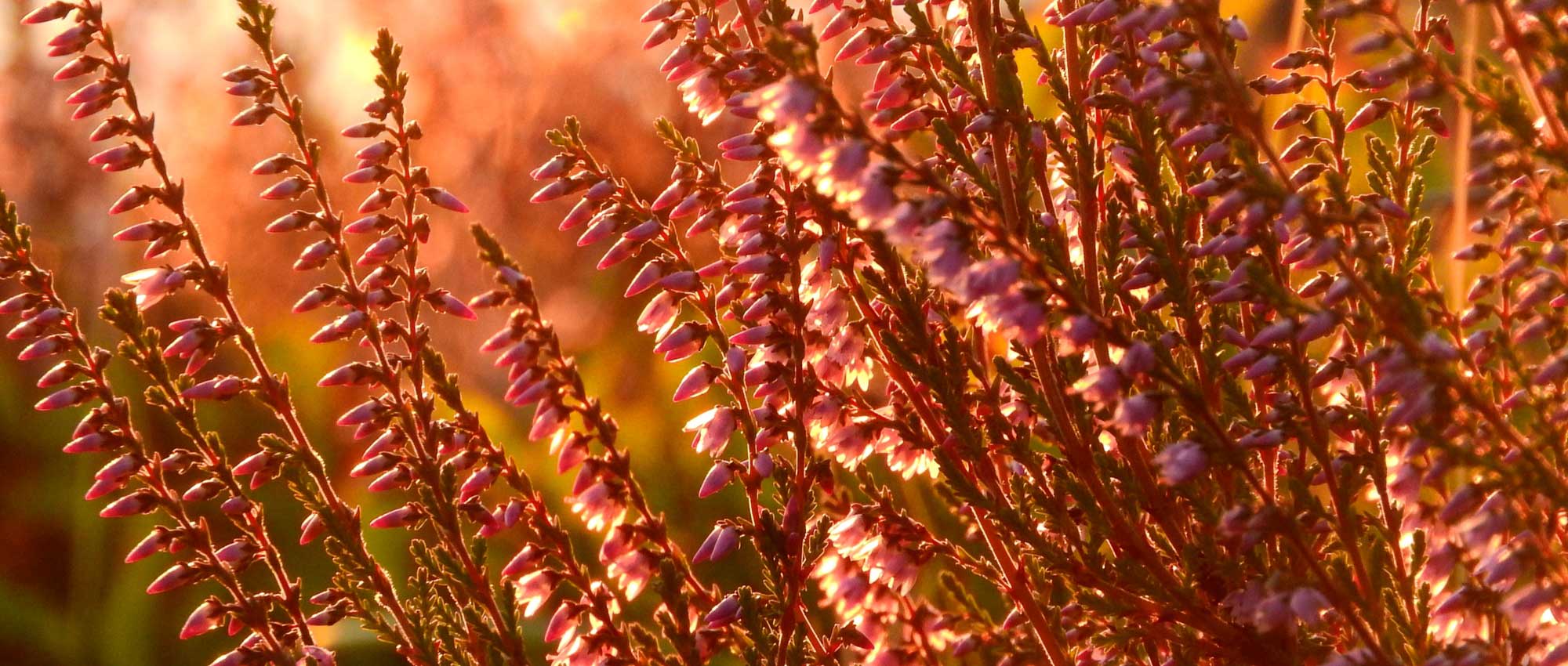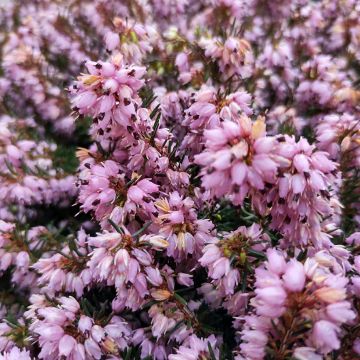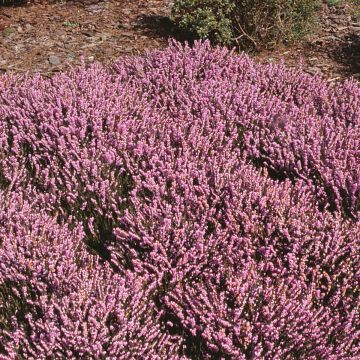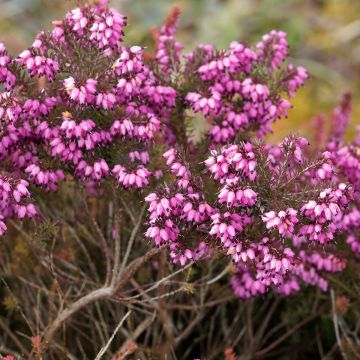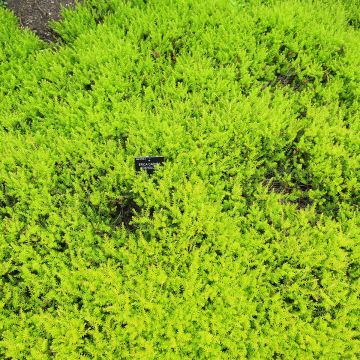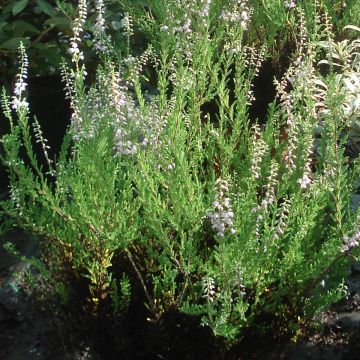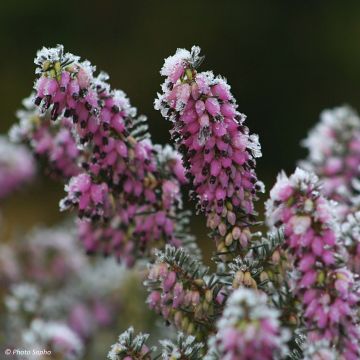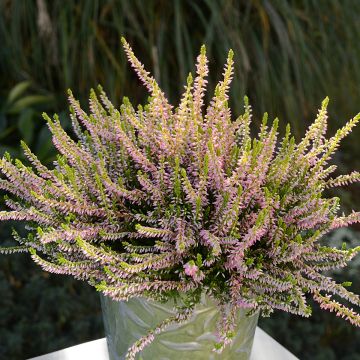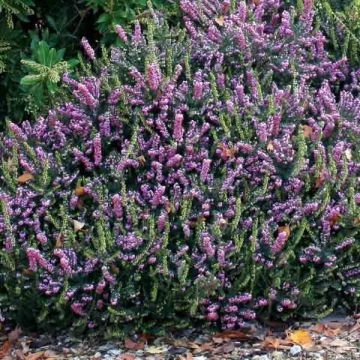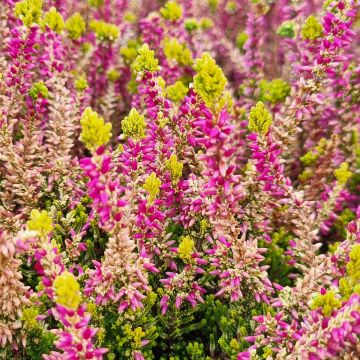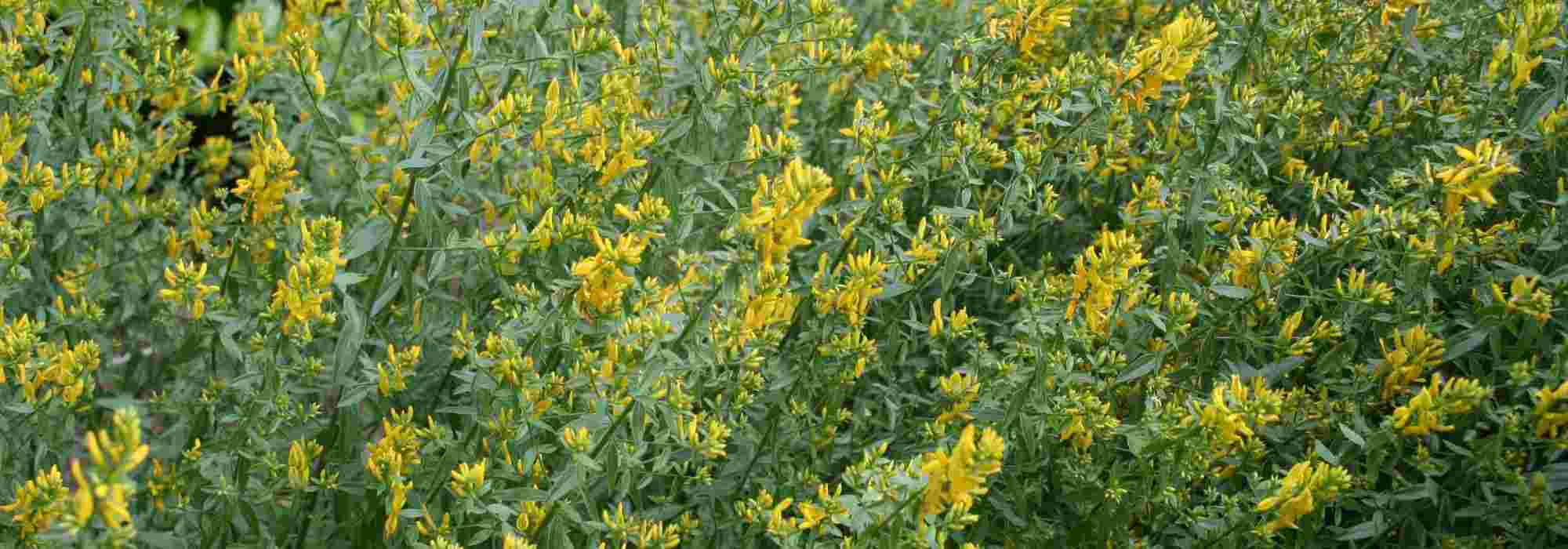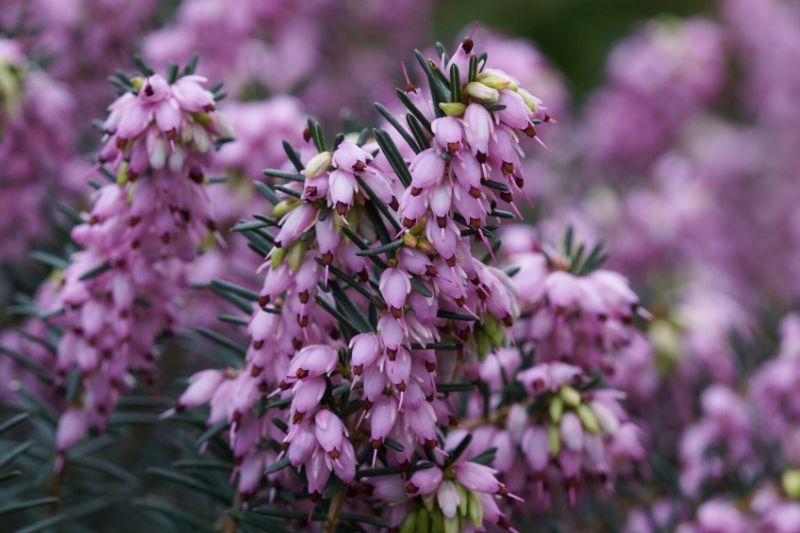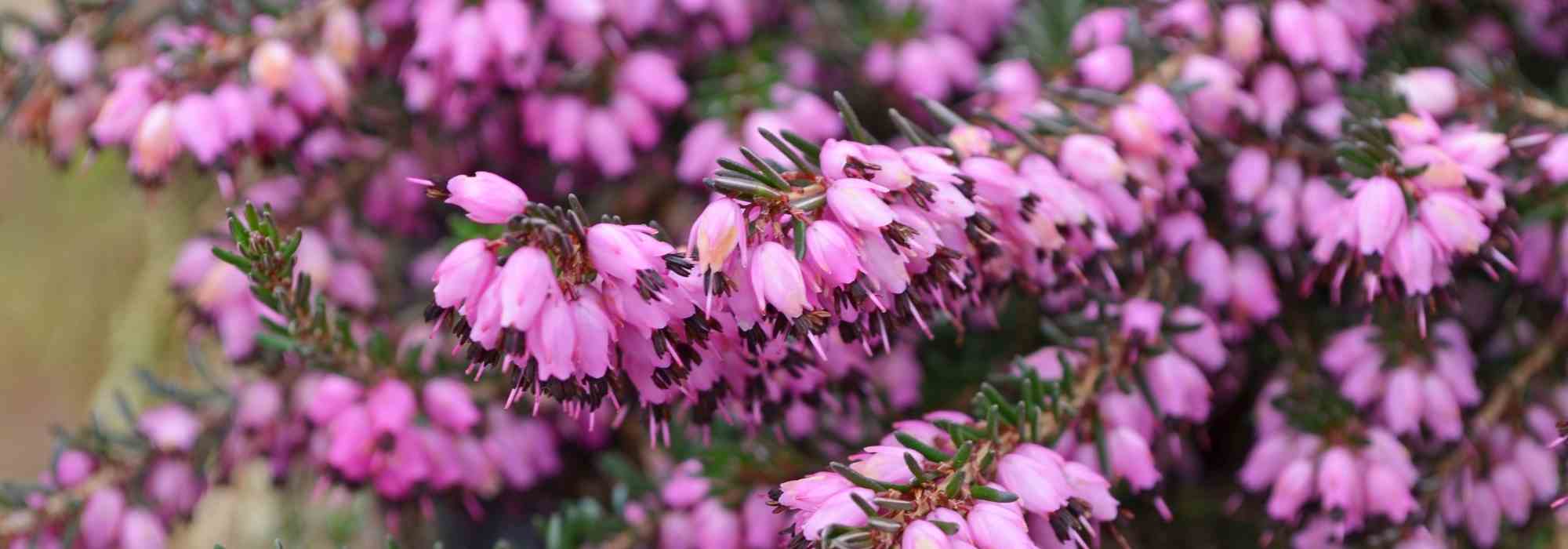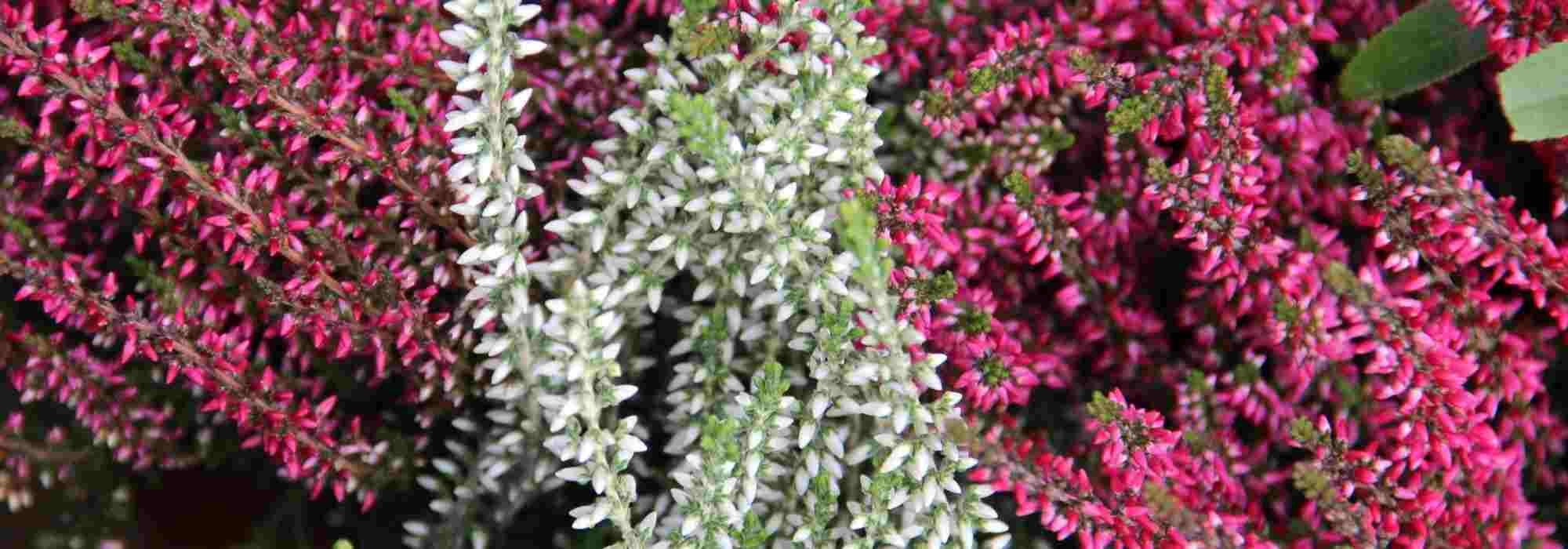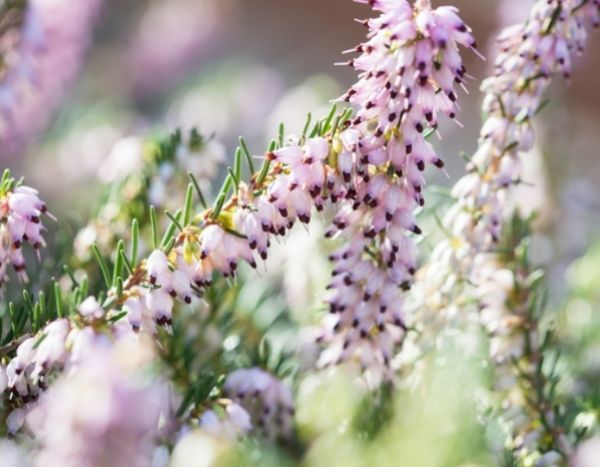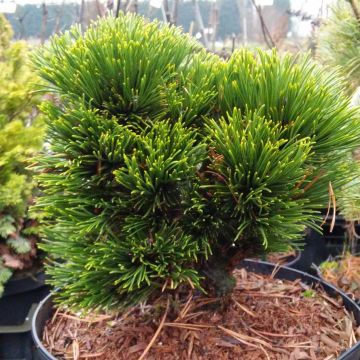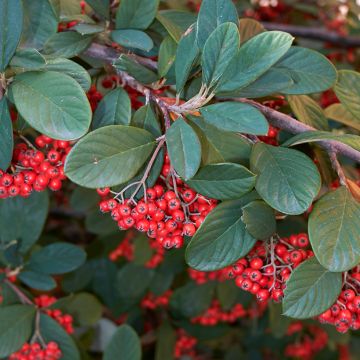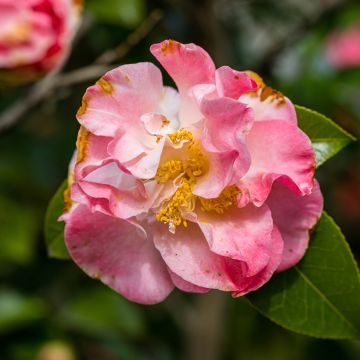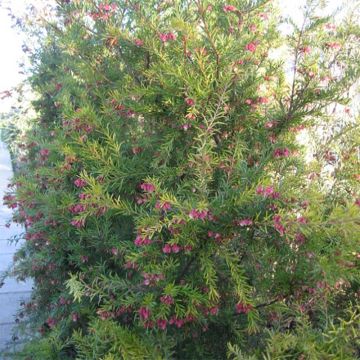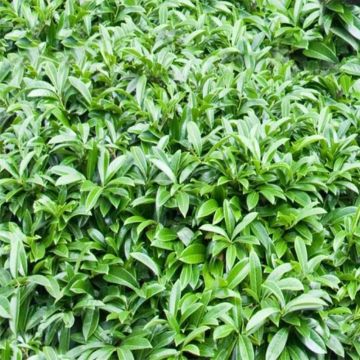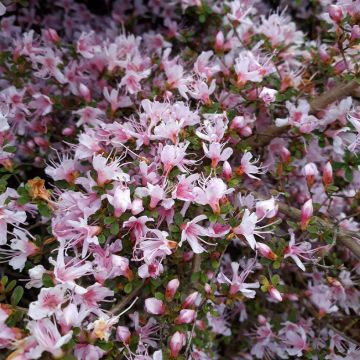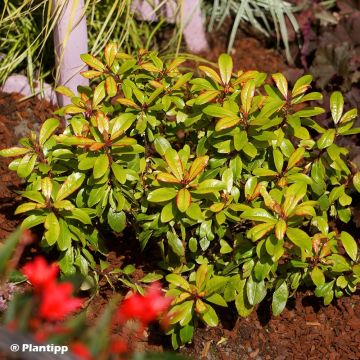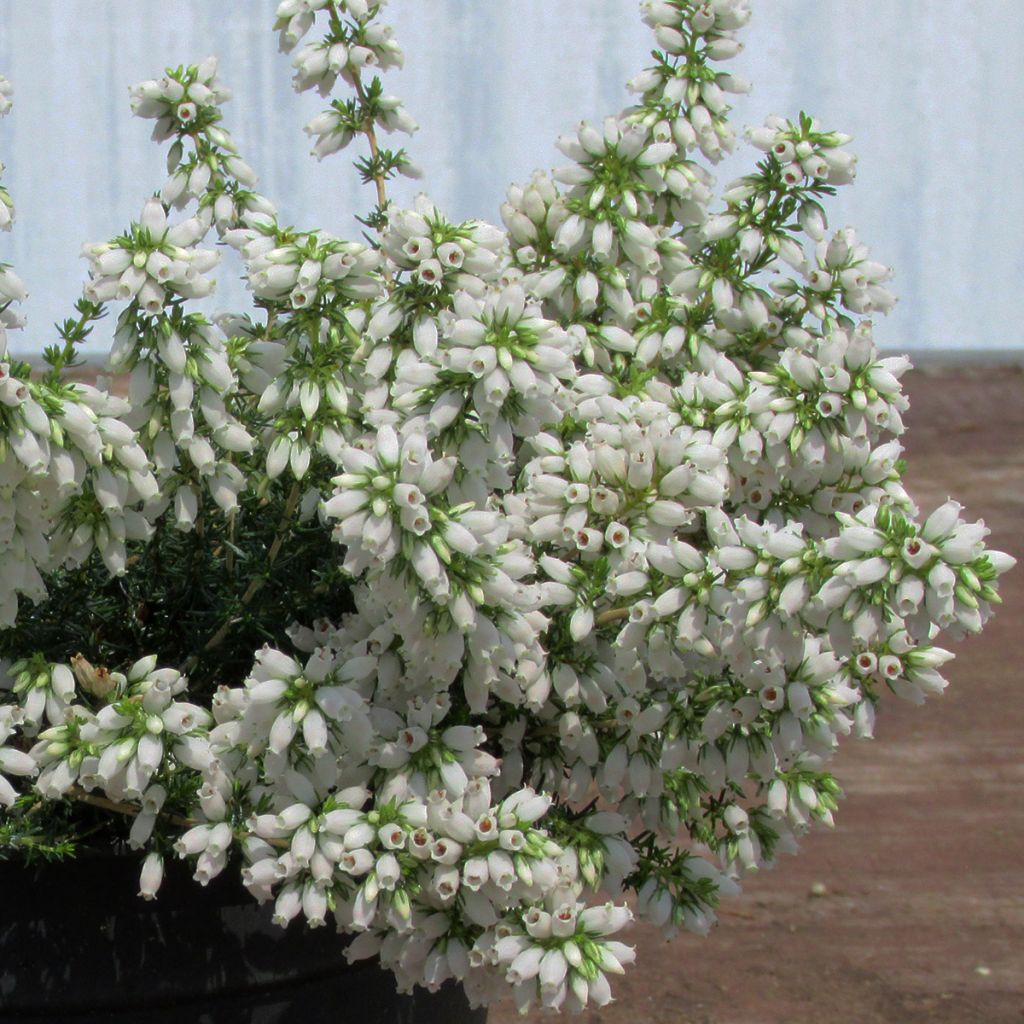

Erica cinerea f. alba - Bell Heather
Erica cinerea f. alba - Bell Heather
Erica cinerea f. alba Alba
White-flowered Bell Heather
Of the three varieties of heather received, the Erica cinerea arrived in poor condition, as they were less well packed, with numerous branches broken. One even was in a pot too big for its root ball. I hope that once planted, they will regain some vigour.
Pascale M., 27/04/2024
Special offer!
Receive a €20 voucher for any order over €90 (excluding delivery costs, credit notes, and plastic-free options)!
1- Add your favorite plants to your cart.
2- Once you have reached €90, confirm your order (you can even choose the delivery date!).
3- As soon as your order is shipped, you will receive an email containing your voucher code, valid for 3 months (90 days).
Your voucher is unique and can only be used once, for any order with a minimum value of €20, excluding delivery costs.
Can be combined with other current offers, non-divisible and non-refundable.
Home or relay delivery (depending on size and destination)
Schedule delivery date,
and select date in basket
This plant carries a 24 months recovery warranty
More information
We guarantee the quality of our plants for a full growing cycle, and will replace at our expense any plant that fails to recover under normal climatic and planting conditions.
Would this plant suit my garden?
Set up your Plantfit profile →
Description
The Erica cinerea f. alba is a top ground cover choice for your acidic and well-drained, even dry soil. The heather with white flowers forms a compact, low and spreading tuft with evergreen foliage (retains its leaves all year round). Its narrow, dark green needle-like leaves host clusters of white bell-shaped flowers from July to October. These flowers bring joy to pollinating insects. This perennial plant appreciates non-burning sun and partial shade.
From the Ericaceae family, the Erica cinerea or heather grows in heathlands and siliceous woods in Western Europe. It is very often found in the wild in Europe. This compact, spreading subshrub has slender, tortuous branches covered with ash-coloured bark. Throughout the year, they are adorned with fine dark green needles, 3 to 10mm long. From July to October, its bell-shaped flowers are grouped in clusters at the end of the branches. Its white form, E. cinerea f. alba (sometimes called E. cinera ‘Alba’), as its name suggests (alba meaning "white" in Latin), is covered with white flowers all summer, particularly attractive to pollinating insects.
Easy to grow, heathers lend themselves to many uses in the garden: as a mass planting, border, rockery or even in a planter. As lovers of acidic and well-drained soil, pair them with plants that have the same needs, ideally other heathers or acid-loving plants such as deciduous azaleas or magnolias which they will elegantly dress the base of.
Create a carpet of heathers that blooms almost all year round by combining your Erica cinerea f. alba with winter heathers like Erica carnea ‘Rosalie’, which is covered in pink flowers from January to May, or Erica x darleyensis ‘Kramer’s Rote’, with bright pink flowers from November to March. This way, your planting will never be without flowers. You can also combine your heather with grasses like Deschampsia flexuosa 'Tatra Gold' or Anthoxanthum odoratum, which will bring lightness and modernity to your composition.
Erica cinerea f. alba - Bell Heather in pictures
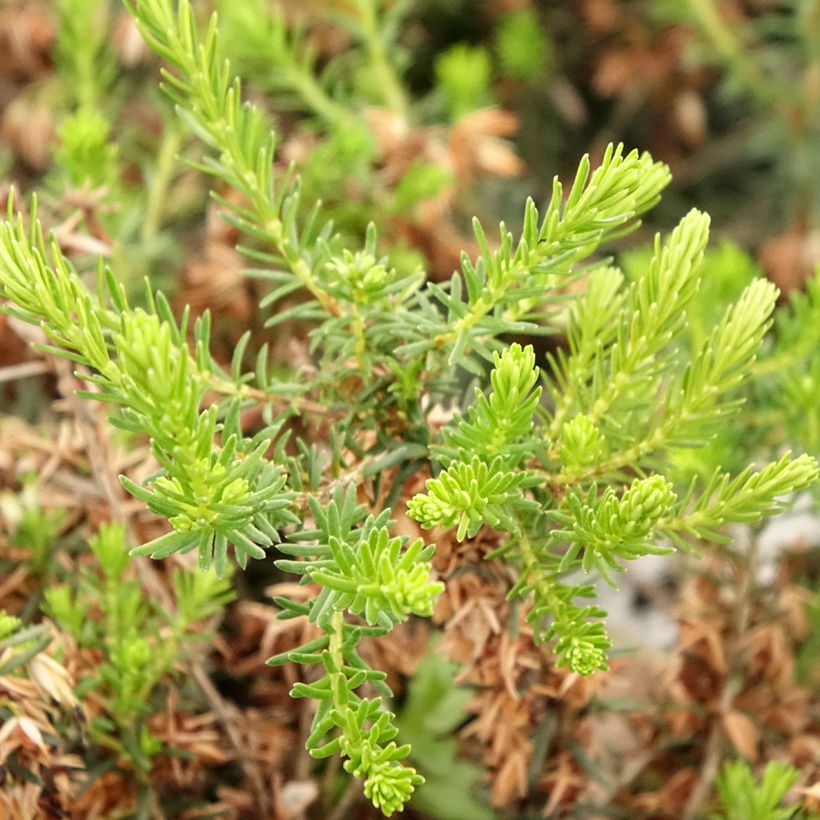

Plant habit
Flowering
Foliage
Botanical data
Erica
cinerea f. alba
Alba
Ericaceae
White-flowered Bell Heather
Cultivar or hybrid
Other Heather
View all →Planting and care
The white-flowered Heather, Erica cinerea f. alba, enjoys (non-burning) sun and partial shade as well as acidic, moist, well-drained or dry soil. Easy to grow, it also tolerates poor soil. Mulch around its base in case of prolonged drought to retain soil moisture. In spring, feed with ericaceous plant fertilizer.
After flowering, prune lightly to maintain a dense and vigorous clump that will flower abundantly the following summer.
Planting period
Intended location
Care
Planting & care advice
-
, onOrder confirmed
Reply from on Promesse de fleurs
Similar products
Haven't found what you were looking for?
Hardiness is the lowest winter temperature a plant can endure without suffering serious damage or even dying. However, hardiness is affected by location (a sheltered area, such as a patio), protection (winter cover) and soil type (hardiness is improved by well-drained soil).

Photo Sharing Terms & Conditions
In order to encourage gardeners to interact and share their experiences, Promesse de fleurs offers various media enabling content to be uploaded onto its Site - in particular via the ‘Photo sharing’ module.
The User agrees to refrain from:
- Posting any content that is illegal, prejudicial, insulting, racist, inciteful to hatred, revisionist, contrary to public decency, that infringes on privacy or on the privacy rights of third parties, in particular the publicity rights of persons and goods, intellectual property rights, or the right to privacy.
- Submitting content on behalf of a third party;
- Impersonate the identity of a third party and/or publish any personal information about a third party;
In general, the User undertakes to refrain from any unethical behaviour.
All Content (in particular text, comments, files, images, photos, videos, creative works, etc.), which may be subject to property or intellectual property rights, image or other private rights, shall remain the property of the User, subject to the limited rights granted by the terms of the licence granted by Promesse de fleurs as stated below. Users are at liberty to publish or not to publish such Content on the Site, notably via the ‘Photo Sharing’ facility, and accept that this Content shall be made public and freely accessible, notably on the Internet.
Users further acknowledge, undertake to have ,and guarantee that they hold all necessary rights and permissions to publish such material on the Site, in particular with regard to the legislation in force pertaining to any privacy, property, intellectual property, image, or contractual rights, or rights of any other nature. By publishing such Content on the Site, Users acknowledge accepting full liability as publishers of the Content within the meaning of the law, and grant Promesse de fleurs, free of charge, an inclusive, worldwide licence for the said Content for the entire duration of its publication, including all reproduction, representation, up/downloading, displaying, performing, transmission, and storage rights.
Users also grant permission for their name to be linked to the Content and accept that this link may not always be made available.
By engaging in posting material, Users consent to their Content becoming automatically accessible on the Internet, in particular on other sites and/or blogs and/or web pages of the Promesse de fleurs site, including in particular social pages and the Promesse de fleurs catalogue.
Users may secure the removal of entrusted content free of charge by issuing a simple request via our contact form.
The flowering period indicated on our website applies to countries and regions located in USDA zone 8 (France, the United Kingdom, Ireland, the Netherlands, etc.)
It will vary according to where you live:
- In zones 9 to 10 (Italy, Spain, Greece, etc.), flowering will occur about 2 to 4 weeks earlier.
- In zones 6 to 7 (Germany, Poland, Slovenia, and lower mountainous regions), flowering will be delayed by 2 to 3 weeks.
- In zone 5 (Central Europe, Scandinavia), blooming will be delayed by 3 to 5 weeks.
In temperate climates, pruning of spring-flowering shrubs (forsythia, spireas, etc.) should be done just after flowering.
Pruning of summer-flowering shrubs (Indian Lilac, Perovskia, etc.) can be done in winter or spring.
In cold regions as well as with frost-sensitive plants, avoid pruning too early when severe frosts may still occur.
The planting period indicated on our website applies to countries and regions located in USDA zone 8 (France, United Kingdom, Ireland, Netherlands).
It will vary according to where you live:
- In Mediterranean zones (Marseille, Madrid, Milan, etc.), autumn and winter are the best planting periods.
- In continental zones (Strasbourg, Munich, Vienna, etc.), delay planting by 2 to 3 weeks in spring and bring it forward by 2 to 4 weeks in autumn.
- In mountainous regions (the Alps, Pyrenees, Carpathians, etc.), it is best to plant in late spring (May-June) or late summer (August-September).
The harvesting period indicated on our website applies to countries and regions in USDA zone 8 (France, England, Ireland, the Netherlands).
In colder areas (Scandinavia, Poland, Austria...) fruit and vegetable harvests are likely to be delayed by 3-4 weeks.
In warmer areas (Italy, Spain, Greece, etc.), harvesting will probably take place earlier, depending on weather conditions.
The sowing periods indicated on our website apply to countries and regions within USDA Zone 8 (France, UK, Ireland, Netherlands).
In colder areas (Scandinavia, Poland, Austria...), delay any outdoor sowing by 3-4 weeks, or sow under glass.
In warmer climes (Italy, Spain, Greece, etc.), bring outdoor sowing forward by a few weeks.






























